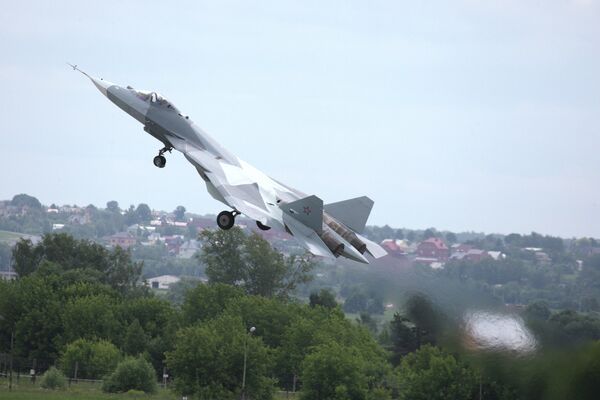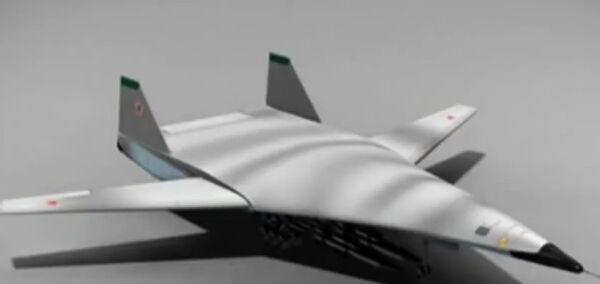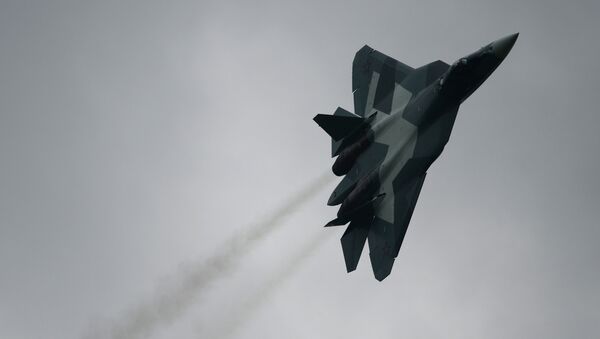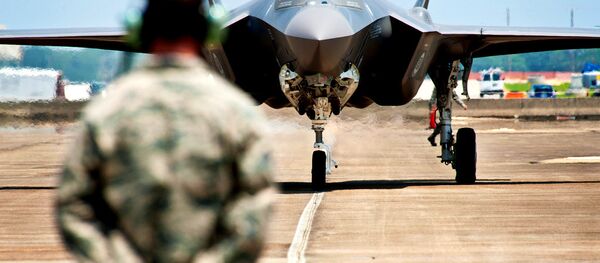PAK FA – is a fifth-generation fighter program of the Russian Air Force. The T-50 is the name of the prototype aircraft designed by Sukhoi for the PAK FA program. The aircraft is a stealthy, single-seat, twin-engine jet fighter, and will be the first operational aircraft in Russian service to use stealth technology.

The PAK FA was created as an analogue of the US tactical fighter the F-22 Raptor, the original being a heavy multi-role fighter, capable of competing for air superiority and using precision-guided weapons. In the previous generation, analogues of these machines were the Russian Su-30MK (in all their diversity), Su-35s and US F-15s.
The first production aircraft is scheduled for delivery to the Russian Air Force starting in early 2017. Earlier it was planned to purchase up to 65 units of the T-50, but the military recently clarified that during the mentioned dates they will purchase only 12 aircraft and the rest of the purchase will be done after 2020.
PAK DA — the PAK- DA is a proposed Russian next-generation strategic bomber design, being developed by the Tupolev Design Bureau.
The work on creating the PAK DA was launched in 2009. The military wanted to receive a single type of long-range bomber to replace the current Tu-160, Tu-95MS and Tu-22M3.

Speculation about the design includes a combat radius of around 3,500 kilometers with full payload, a loaded weight of 100 to 120 tons, 4 engines and the possible use of some equipment from the Sukhoi PAK FA project such as avionics and engines.
In March 2013, it was reported that the selected PAK DA design would be a subsonic flying wing.
It was also revealed that the PAK DA will be equipped with advanced types of precision guided weapons, including hypersonic weapons. The bomber itself will fly at subsonic speeds.
The planning stage of the strategic bomber was completed in less than one year, and development work will begin in 2014. First flights will begin in 2019, and the bomber is to enter service in 2025.
PAK TA – A transport aircraft, PAK TA, will fly at supersonic speeds (up to 2,000 km/h) and will boast a remarkably high payload of up to 200 tons. It will also have a range of at least 7,000 kilometers.
The PAK TA program envisions 80 new cargo aircraft to be built by 2024. This means in a decade Russia’s Central Command will be able to place a battle-ready armored army anywhere, Expert Online reports, citing a source in the military who attended the closed meeting.
In April 2016, work will begin on aircraft “Ermakov”. The production of a series of aircraft will be developed in Ulyanovsk (factory “Aviastar-SP”) after 2024.
PAK DP — A long-range interception aircraft will be developed to replace the MiG-31, which occupies a special niche in the defense of the country from air attacks (including by cruise missiles).
Initially it was reported that work on the PAK DP will start after 2017, and the first aircraft will be provided to the troops after 2025. But a recent statement by commander Bondarev revealed that the work will begin in 2019.
Currently, the design of an avionics complex is underway. The MiG-31 even has the ability to work in airplane mode radar surveillance and guidance for other machines.
Like the MiG-25, the MiG-31 is a large twin-engine aircraft with side-mounted air intake ramps, a shoulder-mounted wing with an aspect ratio of 2.94, and twin vertical tailfins. The MiG-31 is limited to only 5g when travelling at supersonic speeds. While flying under combat weight, its wing loading is marginal and its thrust-to-weight ratio is favorable. However, the MiG-31 is not designed for close combat or rapid turning.





